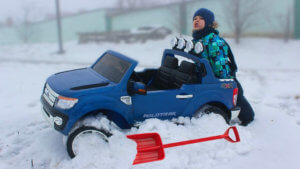
This winter – and always – Selective is committed to your safety, which is why we’ve compiled these winter car prep tips to help you steer clear of road hazards and keep your car well maintained.
General Checkup
Snow, ice, rain, and slush all represent hazards that can take a serious toll on your car. As such, it’s important to perform the proper diagnostic checks prior to taking on harsh driving conditions.
Extreme cold temperatures can quickly deplete a battery, so be sure to test your battery to make sure it is producing the maximum amount of power. If battery issues are present, it is recommended that you replace the battery at your earliest convenience. Additionally, check all fluids, most notably engine coolant and oil, and the heating and cooling systems for any irregularities, damages, or shortages. A quick tune up at your local auto service center can help you take care of general maintenance.
Tires, Brakes & Brake Pads
If you live in an area that gets a lot of precipitation, you might want to invest in proper winter tires and have them installed soon to practice winter driving safety. Winter tires tend to not only offer a smooth and fuel-efficient ride of those made for all seasons, but can also provide the extra traction necessary to drive in snowy conditions.
If you choose to keep your all-season tires, check the treads to ensure they are not too worn. For ideal performance, it is recommended that treads be no more than half worn. If they exceed half worn, it may be time to seek replacement tires. Equally as important as tire treads are your vehicle’s brakes. To avoid a decline in braking performance resulting from wet driving conditions, have your brake system checked frequently for functionality or wear and tear, and replace any parts accordingly.
Windshield
To help to maintain visibility even when the salt, snow and other hazards pound on the glass, it is advised to get a windshield treatment. This can be done at your auto body shop, or at home with a variety of store-bought windshield solutions.
Additionally, while it may be tempting to remove just enough snow from your windshield to make your morning commute, it’s imperative that your car is completely free of ice and snow following a winter storm. Not only does not removing the snow cause a risk to you and other drivers on the road, in certain states there are laws against leaving snow on your vehicle while driving.
Emergency prep
Extreme conditions can translate to emergency situations even if you take all of the precautions to avoid a breakdown or other issues on the road. DMV.org urged winter drivers to keep blankets, boots, water, flares, flashlights, engine coolant, washer fluid and engine oil in their vehicles at all times during the winter in case they should run into an emergency situation. Having a winter survival kit for your car is essential to your safety. Remember to also keep a snow brush and ice scraper in the car so you may clean all snow and ice from your vehicle before hitting the road.
